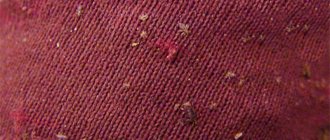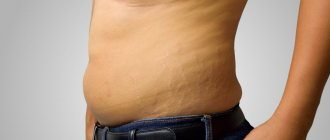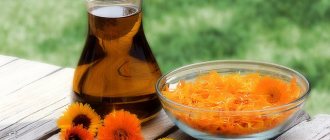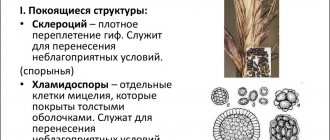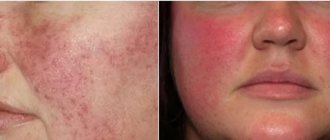Mushrooms are constant companions of humans. Thus, a fungus of the genus Candida lives in virtually every person. As long as everything is in order with the immune system, such a neighborhood is not dangerous. But as soon as any malfunction occurs in the body, the mushrooms begin to actively multiply, ceasing to be “peaceful neighbors.”
Reproducing by spores, the fungus is easily transmitted through the air or through household contact. At the same time, the spores are very “tenacious” - they persist for a long time on clothes, bedding, hygiene items and are ready to become active at any time.
What to do to prevent the colonization of pathological microorganisms and how to cure hair fungus so that the disease does not return again and again - we will understand the symptoms, diagnosis and treatment features.
Mechanism of action of antimycotic agents
Dermatologists and mycologists practice a comprehensive, step-by-step approach to the treatment of fungal skin lesions - mycoses. It aims to destroy infectious pathogens and eliminate the symptoms of a highly contagious disease.
And also to strengthen local immunity, which becomes an excellent prevention of re-introduction of fungi into the skin. To do this, doctors usually prescribe external agents to patients - ointments, creams, gels, solutions, lotions.
Effective drugs with a fungicidal effect are used to treat skin mycoses. The active substances block squalene-2,3-epoxidase, an enzyme that triggers the production of ergosterols necessary for fungi to build membranes. As a result, cell permeability increases. Intercellular fluid with macro- and microelements dissolved in it easily penetrates them. The cell undergoes lysis (dissolution) and is destroyed from the inside.
What drugs are classified as fungicides?:
- Nizoral;
- Exoderil;
- Terbinafine;
- Mikosist;
- Mycoderil;
- Batrafen;
- Lamisil;
- Fungoterbin and others.
There is also a group of drugs with fungistatic activity. Their components are not capable of destroying pathogens. They create an environment that is very unfavorable for their growth and reproduction. After using the drugs, the spread of the infectious-inflammatory process is slowed down, but it does not go away.
Fungistatic properties are characteristic of many products not intended for the treatment of mycoses. These are Salicylic, Zinc, Ichthyol ointment, Vishnevsky liniment. Many antibacterial drugs also prevent fungi from reproducing. But you should not use them for mycoses - the fight will be carried out with varying success.
What drugs are effective in the treatment of onychomycosis nail fungus were described in the link.
Drugs for the treatment of fungus in children
Almost all medications used to treat fungal infections have a high degree of toxicity. Therefore, such drugs are used very rarely for the treatment of diseases in children. Only in the most extreme cases can a dermatologist prescribe such a medicine. In this case, the child must have a severe form of the disease.
The following drugs can be used to treat children with the permission of a doctor:
- Terbizil ointment. It is the safest and can be used even for small children.
- Lamisil and Exoderil. It is allowed to be used to treat illness in a child over 12 years of age.
- Amphotericin B. To relieve acute candidiasis, you can use the drug once.
- Mifungar or Nizoral. It is allowed to be used by children to cure nail fungus.
- Tolnaftat. It is allowed to be used to eliminate dermatophytosis.
For feet
Foot fungus leads the ranking of skin mycoses in terms of the number of detected cases. According to some data, it is diagnosed in 15–20% of the world's population.
And this despite the annual supply of modern drugs to the pharmaceutical market, as well as preventative agents. Pathogens quickly lose sensitivity to them, so even long-term treatment does not bring results.
List of ointments to the components of which fungal cells are not yet resistant:
- Lamisil;
- Terbinafine;
- Clotrimazole;
- Microspores;
- Exoderil;
- Bifosin;
- Exifin;
- Mikonorm.
After the death of infectious pathogens, the skin condition immediately improves. It stops itching and inflaming, the pain, which gets worse when walking, disappears. The use of these products helps prevent fungi from penetrating the nail plates. Use them together with antiseptic solutions - Furacilin, Chlorhexidine.
For brushes
Mycosis is localized on the hands, usually between the fingers. There is the most delicate, thin, sensitive skin, so you need effective, but as safe as possible ointments and creams. After all, if it overdries, the problem will only worsen - both fungi and pathogenic bacteria will penetrate into the microcracks.
Such drugs have the mildest, most gentle effect.:
- Candide;
- Imazol;
- Kanesten;
- Mycozolon;
- Zalain;
- Miconazole;
- Onabeth.
Ointments will help prevent maceration - dissolution of the intercellular substance. At the same time, they dry well, relieve irritation, and eliminate minor rashes. They can also be applied to the elbows, wrists, forearms, and armpits.
For body
Signs of fungus on the body are pink-red ring-shaped spots with slightly raised, flaky edges. If a person does not immediately consult a doctor and practices self-medication, then complications will not last long. A staphylococcal or streptococcal bacterial infection is added to the fungal infection.
To prevent negative developments, you need to immediately use ointments with a powerful fungicidal effect:
- Nystatin;
- Terbinafine.
- Mycoseptin;
- Zalain;
- Ketoconazole;
- Lamisil;
- Nitrofungin;
- Mycozolon.
Candida yeast-like fungi, also known as the causative agents of candidiasis, “settle” in the skin folds, including the inguinal folds. An interesting fact is that a drug synthesized many decades ago copes well with them. This is a cheap antimycotic drug Clotrimazole, which can be bought at any pharmacy.
For intimate areas
Fungi that affect male and female genital organs always live there. They should not be confused with sexually transmitted infections. Although they can be transmitted through sexual contact. The trigger for an increase in their activity is usually a weakened immune system due to a suddenly worsened chronic disease or the development of a violent allergic reaction. Doctors prefer to treat vaginal fungus with both ointments and vaginal suppositories, balls, and tablets.
Any drug that contains such active ingredients will help.:
- miconazole;
- clotrimazole;
- isoconazole;
- natamycin.
And Pimafucin cream is intended for men. Even after a one-time treatment of the skin on the inner thighs, most of the infectious agents die.
Recently, nystatin-based agents have become increasingly used in the treatment of inguinal candidiasis. It was found that the ointments destroy not only pathogens, but lactobacilli living in the vagina. And they are the body’s natural defense against fungi, viruses, and bacteria. If your doctor has prescribed nystatin, use it, but then take a course of probiotics (Linex, Acipol, Hilak Forte) for 7-10 days to restore vaginal microflora.
What products can pregnant women use?
Due to high toxicity, most antifungal ointments are not suitable for pregnant women, as well as children. In this case, it is allowed to use only the latest generation products, since they are less harmful to the body. Nitrophenol, triazole or imidazole should be present as active substances in such an ointment.
But even such drugs during pregnancy can only be used as prescribed by a doctor. In this case, it is necessary to strictly adhere to the recommended dosage.
List of means approved to eliminate infection:
- Miconazole;
- Mycosporus;
- Mikozan;
- Clotrisal;
- Lamisil;
- Clotrimazole.
For the scalp
When fungi infect the scalp, the process of baldness begins. With fungal pathologies, hair either falls out or simply breaks off. “Hair loss” is especially intense when immunity is reduced, for example, during ARVI. And with favus, those with dark hair turn gray due to the penetration of fungal spores into the hair.
To prevent this, start using such medications in the form of shampoos:
- Keto Plus with ketoconazole and zinc pyrithione;
- Friederm with zinc and tar;
- Dandruff with ketoconazole;
- Algopix with juniper tar, seaweed extract, alcohol solution of salicylic acid;
- Fitoval with ciclopirox olamine, zinc pyrithione, white willow phytoextract.
Products from the Sulsen line - paste, cream, oil and shampoo - have also proven themselves to be effective against mycoses of the scalp. Their composition is formed from citric and salicylic acids, glycerin, natural and essential oils, plant extracts, panthenol. And the active ingredient is selenium disulfide with pronounced fungicidal activity.
Features of diagnosing hair fungus
A specialist can determine the presence and type of fungus relatively easily and reliably with the help of laboratory tests using microscopic and cultural methods. The first involves taking hair and skin flakes from the patient to examine for the presence of mycelial spores, gas bubbles, and fragments of large mushrooms. The cultural method is used if the presence of a fungus is nevertheless detected and allows one to determine the specific type of mycelium that has colonized the patient’s scalp. To do this, the detected fungus is grown in a nutrient medium, after which the grown colony is examined, in particular, the growth pattern is assessed (the process takes several days).
One of the modern tools used to determine mycosis is a Wood's lamp. The device emits a wave of a certain length and allows you to illuminate the colonies, giving an idea of the size and location, but not providing an answer regarding the type of microorganism, and therefore the treatment tactics.
For children
And newborns are not immune from mycoses. Fungi are transmitted to them from the mother when passing through the birth canal or in the first months of care. They can penetrate skin with diaper rash or damaged by diaper dermatitis. Since the immunity of children is at the stage of formation, the safest antifungal agents are needed.
The most effective ones:
- Clotrimazole quickly destroys cells of pathogenic and opportunistic fungi and prevents the addition of bacterial infection;
- Mikoseptin (from 2 years) has a pronounced fungicidal effect, cleanses the dermis and epidermis of pathogenic microorganisms;
- Pimafucin is active against a variety of fungi - yeast-like, yeast, dermatophytes.
Doctors often do not prescribe antifungal drugs to young patients, even if there are no age restrictions in the list of contraindications. For example, the use of Exoderil in the annotation is not prohibited. But at the same time, it is indicated that no clinical trials have been conducted, the results of which would confirm the safety of the drug for such a group of patients. Don't hesitate to ask your doctor about this. It is quite possible that he will go along with the meeting and choose a different antifungal agent for the child.
Antiseptic ointments
These drugs are not complete antifungal drugs. Therefore, they are recommended for use as an adjuvant treatment. The advantages of antiseptic drugs are their non-toxicity and low price.
The most popular inexpensive ointments for fungus:
- Salicylic ointment. Contains salicylic acid as an active substance, which destroys all types of fungal infections. Duration of treatment is from 1 to 3 weeks. Cannot be used in childhood or with renal failure. The average price of this ointment is 45 rubles.
- Zinc ointment. Contains zinc oxide, which has an antibacterial effect. The drug is safe for health, but as an independent remedy against fungus it is useless. In pharmacies, ointment can be purchased at a price of 30 rubles.
- Sulfuric ointment. It is one of the oldest antifungal agents. It has a pronounced antiseptic effect and relieves itching well. It is best used as part of a complex treatment. The cost of this ointment in pharmacies is from 40 rubles.
Top 5 most effective remedies
In pharmacies, local and external antimycotic (antifungal) agents are presented in a wide range. They differ in active substances, duration of use, lists of possible side effects, and price.
A list of properties that a high-quality product should have will help you make the right choice.:
- destroys fungi rather than inhibiting their growth;
- after the first application, it prevents the infectious-inflammatory process from spreading to healthy areas of the body;
- immediately eliminates pain, burning, itching, peeling and weeping;
- eliminates the unpleasant odor, characteristic mainly of foot fungus;
- softens the skin, stimulates the healing of minor damage, such as cracks.
All of the following drugs meet these requirements. These are the most effective remedies that have proven themselves in clinical practice. The undoubted advantages of ointments and creams are that their cost is quite affordable and their consumption is economical.
Zalain
Zalain is intended for the treatment of acute and chronic skin diseases caused by fungi. The powerful antimycotic effect is due to sertaconazole, synthesized on the basis of imidazole and benzothiophene. Each of them is characterized by pronounced fungicidal activity. It has been established that the antimycotic first inhibits (blocks) and then destroys pathogenic bacteria. This explains the low probability of penetration of staphylococci and streptococci into inflammatory foci during treatment of mycosis with Zalain.
When calculating doses, a dermatologist or mycologist focuses on the area of affected skin. The cream should be evenly distributed over the inflamed area of the body, slightly covering healthy skin. Frequency of application - up to 2 times a day. The duration of therapy varies from 1 to 2 weeks.
Exoderil
Exoderil reduces the severity of mycosis symptoms after the first rubbing of the cream into infected areas of the body. Its active substance naftifine penetrates and is evenly distributed in the inflammatory skin in a quarter of an hour. The antifungal agent exhibits therapeutic effects within 24 hours.
Naftifine is capable of cumulating (accumulating) in affected tissues. Therefore, even after Exoderil is discontinued, its antifungal properties do not weaken. The cream is recommended to be used up to two times a day for 2-4 weeks. External signs of fungal infection (itching, redness) disappear after 3-5 days of treatment.
Terbinafine
Doctors include the drug in treatment regimens for patients with dermatophytosis, mycoses, candidiasis, and lichen versicolor. Not only its main component terbinafine, but also excipients ensure victory over fungi. They form a protective film on the surface of the skin that retains moisture and prevents pathogenic bacteria from penetrating into inflamed tissues.
Terbinafine is effective at any stage of the disease and copes well with itching of interdigital folds. It should be used up to two times a day, spreading it on damaged skin in a thin layer and lightly rubbing. The duration of the therapeutic course is 1-2 weeks.
Nizoral
The high therapeutic activity of Nizoral is determined by ketoconazole, an imidazole derivative. It selectively affects the body, penetrating only into tissues affected by the fungus. One of the indications for the drug is fungal infection of the scalp. You can also use cream, but Nizoral shampoo with ketoconazole of the same name is better suited.
If your doctor has not determined an individual dosage regimen, you should follow the instructions. It is enough to apply Nizoral cream to damaged areas of the body just once a day. The exception is seborrheic dermatitis. In severe cases, it is recommended to use the drug twice a day.
Duration of treatment is from 3 to 4 weeks.
Miconazole
When choosing a dosage form of the drug, a dermatologist must take into account the stage of mycosis and the severity of its symptoms. For example, for severe vaginal candidiasis, he may recommend using both cream and suppositories at the same time. The active substance of Miconazole is miconazole nitrate. The composition contains propylene glycol, which has an aseptic effect.
Dermatophytes and yeast fungi are very susceptible to the drug. It is also capable of exhibiting bacteriostatic activity, and in high doses, bactericidal activity. Therefore, miconazole often becomes the drug of first choice in the treatment of mixed fungal-bacterial infections. It should be used morning and evening for 3 to 6 weeks.
Broad spectrum drugs
If for some reason it is not possible to purchase several medicines of different directions, you can get by with universal ones. They have a wide spectrum of action and show good results in eliminating various fungal infections.
An example of such universal ointments are:
| Name | Description | Image |
| Lamisil | This drug in the form of a cream uses terbinafine as an active substance. The product is applied to the desired area once a day. This allows for cure within 2 weeks. The cost of the drug is from 470 rubles | |
| Exoderil | Contains naftifine as an active substance. It has a good penetrating effect, accumulates in tissues, preventing relapses. The cost of this cream in pharmacies is from 400 rubles | |
| Clotrimazole | An effective, inexpensive antifungal cream. It has slight toxicity, so it is allowed to be used by pregnant women. The cost of the product is from 40 rubles |
The best preventatives
Mycosis develops when a certain area of the skin is colonized by pathogenic or opportunistic fungi. The former are introduced into the body from the outside, while the latter constantly live on the human body. Both are activated when the immune defense is weakened, for example, after severe hypothermia or recent flu. But even a person with excellent health cannot avoid infection if he wears someone else’s infected shoes.
Even more stringent requirements are imposed on a quality product to prevent the development of fungal infections. It should not only instantly neutralize pathogens, but also strengthen local immunity. Only in this case can you be 100% sure that opportunistic fungi will not become active again.
What should be used for prevention:
- GEHWOL foot powder;
- Varanga ointment;
- Lamisil spray;
- Domix Green Professional, spray lotion;
- Shungite foot cream with tea tree oil;
- protective tincture for the prevention of fungal diseases Nagel-Tinktur;
- SALTON foot and shoe spray Feet Comfort;
- Fundizol cream for nail and skin fungus;
- Dobrovit antifungal foot spray StopGribok;
- Altai Lux gel for feet Sweet clover with antifungal and deodorizing effect;
- Mycostop spray for feet and shoes;
- “Amanita anti” cream for calluses against fungus, sweating.
The use of these products eliminates secondary infection when visiting the beach, bathhouse, sauna, sports locker rooms or swimming pool. The immune system will immediately detect and destroy infectious agents. Take note that such ointments and creams also perfectly moisturize and nourish the skin, accelerate the healing of cracks, and fight dry calluses and rough, unsightly corns.
Main symptoms of seborrhea
This fungus can be localized not only on the scalp, but also in the area of the eyebrows, mustache, and beard. Develops against the background of disruption of the sebaceous glands. If fat is produced excessively, we are talking about oily seborrhea. If, on the contrary, there is not enough fat, then dry seborrhea. An inflamed sebaceous gland can become infected, for example, with staphylococci, which live on the skin of 90% of people, resulting in fester in the deeper layers of the skin.
A characteristic symptom is crusts (the surface layer of the skin cracks and peels off), as well as profuse dandruff. Reddish-pink spots may appear. Patients note a feeling of tight skin and itching when cold water hits the scalp.
Seborrhea most often affects infants and adolescents.
How to use correctly
Signs of a fungal infection are hard to miss. It manifests itself as peeling, excess moisture, inflammation, layering of scales, severe itching, thickening and changes in the structure of the skin. But you can’t immediately go to the pharmacy with a demand to sell the “best and fastest-acting” antifungal drug. The fact is that the symptoms of mycosis are nonspecific. Similar manifestations are characteristic of both bacterial and viral diseases. Therefore, mycosis must be diagnosed by a doctor.
It is worth immediately clarifying that in the vast majority of cases, treatment is carried out at home. Hospitalization is required for severe systemic mycoses, which can only be eliminated by taking a course of tablets and (or) administering injection solutions. If the feet, hands and other individual parts of the body are affected, it is enough to use ointments at home.
This must be done correctly:
- Before the procedure, clean the skin with warm water and soap, dry well.
- Apply the product, making sure to cover 1 cm of healthy skin.
- don’t take breaks - pathogens quickly become active and restore their population.
- Do not increase the dose yourself in the hope of speeding up recovery - the fungi will become resistant to the active substance, and the medicine will become less effective.
And most importantly, the disappearance of itching, redness, and inflammatory swelling in no way indicates the successful completion of therapy. Finish it within the time frame prescribed by your doctor. Infectious agents may remain in the deepest layers of the dermis. They will immediately begin to grow and multiply, provoking a relapse of mycosis.
If you notice signs of a fungal infection, do not hesitate to seek medical help.
You can start using medications only as prescribed by a doctor. Comment
Symptoms of mycosis of the scalp
There are many alarming symptoms that indicate the presence of a fungal infection:
- Constant itching;
- Rashes;
- Pink spots;
- Dandruff;
- Ulcers and pustules;
- Redness;
- Discharge of purulent exudate from the spots;
- Gray plaque on the hair;
- Hair loss in a specific area.
In addition, there are symptoms that do not appear externally. Infection with a fungus is accompanied by unreasonable fatigue, lethargy and a decrease in the body's immune defense. Mycosis must be treated immediately, as it is easily transmitted through household items, bath accessories and any things. Therefore, antifungal therapy is prescribed not only to the patient, but also to those around him.
With symptoms of mycosis, contact a dermatologist or trichologist. The latter is a specialist of a narrow profile. Only a professional will be able to ascertain the presence of fungus and determine at what stage the mycosis is.


